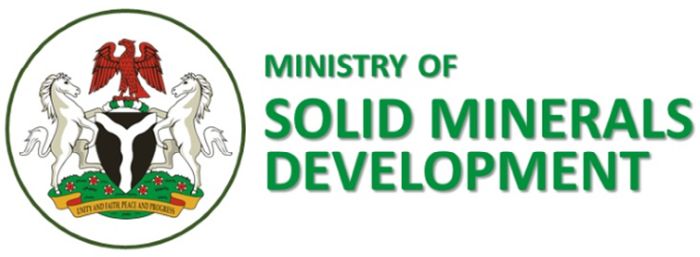- within Tax, Government, Public Sector, Food, Drugs, Healthcare and Life Sciences topic(s)
- with Senior Company Executives, HR and Finance and Tax Executives
- with readers working within the Insurance, Property and Telecomms industries
HIGHLIGHTS OF THE GUIDELINES FOR THE PRODUCTION OF COMMUNITY DEVELOPMENT AGREEMENTS IN THE SOLID MINERAL SECTOR ISSUED BY THE MINISTRY OF SOLID MINERALS DEVELOPMENT
INTRODUCTION
On November 16, 2023, the Honourable Minister of Solid Minerals Development, Dr. Dele Alake, officially launched the 'Guidelines for the Production of Community Development Agreement in the Solid Minerals Sector' (the "Guidelines"). The Guidelines was issued in pursuance of the provisions of Section 116 of the Nigerian Minerals and Mining Act, 2007 (the "Act").
Section 116 of the Act stipulates that the holder of a Mining Lease, Small Scale Mining Lease, or Quarry Lease is required to finalise with the host community, an agreement known as a Community Development Agreement ("CDA" or the "Agreement") or such other agreement that will ensure the transfer of social and economic benefits to the host community prior to the commencement of mining activities within the lease area. The Agreement will then be presented to the Honourable Minister of Solids Minerals Development for evaluation by the Mines Environmental Compliance Department. This evaluation is to ensure compliance with global best practices and extant mining laws.
The Guidelines is intended to elevate the standard of CDA writing in order to align with global best practices and aims to achieve the following objectives: (i) provide the key elements and general contents of the CDA; (ii) specify an acceptable structure for the CDA; (iii) specify appropriate consultative and monitoring frameworks for its implementation; and (iv) specify the means by which the community may participate in the planning, implementation, management and monitoring of activities carried out under the CDA.

At a recent Mining Conference attended by key members of our Firm, the Honourable Minister of Solid Minerals Development emphasised that the Guidelines were issued to enhance the welfare of host communities. He noted that this initiative would ensure that mining companies engage in development and social responsibilities, thereby contributing to the betterment of these communities. Dr. Alake also expressed concern that only eighteen (18) companies signed Community Development Agreements with their host communities in 2023. He affirmed that the Ministry of Solid Minerals Development (the "Ministry") would enforce strict adherence to the Guidelines in the current year.
HIGHLIGHTS OF THE GUIDELINES
A. KEY ELEMENTS OF A GOOD CDA DEVELOPMENT AND THE PROCESSES
Further to the provisions of the Act and the Nigerian Minerals and Mining Regulations of 2011, the Guidelines emphasise the key elements of a CDA to include:
i. Timeframe and Process
With respect to the timeframe and process, the Guidelines stipulate that engagements with host communities should commence prior to mine development when it relates to new projects; and that such engagements should commence prior to expiration of an existing CDA, where the projects are already in operation. The Guidelines further specify that the duration of CDAs is five (5) years.
ii. Stakeholder Participation
The Guidelines seek to promote stakeholder participation by emphasising that stakeholders should actively engage in identifying the needs of their community. This approach aims to build local ownership of CDA components and ensure effective links to existing programs and development processes.
iii. Community Identification and Representation
In addition, the Guidelines place a significant emphasis on community identification and representation by ensuring that host communities identified extend beyond the project area. For instance, communities affected by transportation routes, supply chains, employment catchment areas of the project may be considered as interested stakeholders, even if they are not considered as host communities under a CDA. With respect to community representation, the Guidelines state that, while all groups should be represented, it is impractical to have every community member at the negotiating table. Instead, representatives of host communities and specific stakeholders are typically involved, while the broader community remains engaged through public meetings and focus groups.
Furthermore, the Guidelines provide that for the purpose of executing a CDA, the signatories shall be persons freely chosen by the generality of the community to represent them. Once these representatives are selected, the community head shall, prior to the execution of the Agreement, submit to the Ministry for verification, a letter of introduction issued on the letterhead stationery of the palace or any other recognized community letterhead stationery. The letter is required to be addressed to the Honourable Minister.

The letter of introduction shall include the names, addresses, titles/positions, phone numbers and signatures/thumbprints of the signatories. It should also be accompanied by the minutes of meeting of the community, reflecting the deliberations and selection process of the signatories, who shall be a minimum of three (3) but no more than seven (7) persons. Additionally, signed attendance sheets from this meeting and a signed list of the chosen signatories should be provided along with the letter of introduction.
iv. Funding of the CDA Process and Clear Definition of Roles and Responsibilities of Parties
According to the Guidelines, the cost of implementing the CDA process shall be borne by the Mineral Title Holders, in accordance with existing laws and Regulations in Nigeria. However, should the community opt to engage a legal practitioner, the fees of such legal practitioner shall be borne by the community.
Additionally, the CDA must clearly describe and outline the roles and responsibilities of each party to the Agreement.
v. Grievance and Dispute Resolution Mechanisms
The Guidelines emphasise the importance of providing adequate grievance mechanisms in the CDA. The Act stipulates that grievances shall be referred to the Honourable Minister for resolution, failing which the matter shall be referred to the Arbitration and Mediation Act Cap A18, Laws of the Federation of Nigeria or any statutory modification thereto, in this case, the Arbitration and Mediation Act, 2023.

vi. CDA Implementation and Monitoring
The CDA shall contain implementation and monitoring programs and the committee should involve representatives of the stakeholder groups. In this regard, an annual report should be submitted to the Ministry no later than the end of the first quarter of the following year.
B. THE CDA DEVELOPMENT PROCESSES
In order to ensure that the key objectives of the CDA are met, three consultation meetings and a signing ceremony must be held. The details of these events are highlighted below:
i. Commencement Meeting
This stage marks the beginning of the CDA development process, where the Mineral Title Holders engage with the host community to discuss the CDA. During these discussions, the key elements of the Agreement are addressed. The host community presents their requests to the Mineral Title Holders and parties are enlightened on the guidelines of the CDA Development.
ii. Negotiation Meeting
This second stage involves deliberations between the parties on the requests of the host community and the obligations of the Mineral Title Holders. It is a crucial phase where the parties strive to reach a consensus and determine the content of the CDA. They are permitted to hold as many negotiation meetings as necessary to finalize the terms.
iii. Completion Meeting
After the negotiations are concluded and an agreement on the content and terms of the CDA is reached, the draft CDA is submitted to the Ministry for review. Following this, a date is set for the formal signing of the CDA.
iv. CDA Signing Ceremony
This marks the final stage of the CDA development process. At this point, the parties append their signatures to the Agreement, signifying that they have fully negotiated and agreed upon their respective obligations under the CDA. Subsequently, the Agreement is submitted to the Minister for approval.
C. THE PRESCRIBED CONTENTS AND WRITING FORMAT OF THE CDA
In accordance with Section 193(9) of the Act, the Guidelines specify the essential contents of CDAs. These include addressing critical issues such as: (i) programs for the development of the community in the areas specified in the Act; (ii) the modalities for implementation and monitoring of the programs detailed in the Agreement; (iii) environmental protection measures; (iv) compensation guidelines; (v) conflict management or resolution; (vi) the rights of the holder in relation to the mining area; and (vii) renewability of CDA after a five-year period.
Accordingly, pursuant to Section 116 of Act, the Guidelines stipulate that the CDA should include undertakings or commitments with respect to the social and economic contributions that the project will make towards the sustainability of the host community. It should address various issues relevant to the host community such as employment opportunities, education, vocational training and empowerment, health services, social amenities, financial support, and the provisions of markets for these communities.

In relation to the writing format of the CDA, the Guidelines specify certain requirements for a well-structured CDA. It must be organised in four (4) main parts, namely: (i) the title page, which shall include a space for the signature and seal of the legal practitioner responsible for preparing the Agreement; (ii) the commencement clause, comprised of the parties' clause, recitals and a section defining key terms; (iii) the body, which shall outline how the communities and representatives were determined, the covenants under the CDA, consultative and monitoring frameworks, processes for lodging grievances by the parties, details of additional undertakings by the parties, processes for suspension and termination of the Agreement, as well as clauses for notices and indemnity; and (iv) the execution section, which should provide for endorsement by the Commission for Oaths, include clear and colored photographs taken during the signing ceremony and where applicable, a provision for a Jurat or the interpreter's name, phone number and signature.
Additionally, the Guidelines stipulate that the CDA should be typed in double spacing, using the Times New Roman font at a size of twelve (12). The CDA shall also be properly bound and marked appropriately before submission is made to the Honourable Minister.
CONCLUSION
In summary, the Guidelines serve a pivotal role in delineating the content of the CDA, marking a significant step towards fostering a mutually beneficial relationship between mining operators and host communities. They institutionalize the obligations of mining operators, ensuring that mining projects contribute positively to host communities, through the provision of socio-economic benefits. The Guidelines' emphasis on measurable, time-bound objectives within the CDA enhances accountability, clearly defining party responsibilities and obligations as well as establishing a process for addressing grievances.
Furthermore, in acknowledging the dynamic nature of the mining process, the Guidelines incorporate a monitoring and implementation program to adapt to changes, ensuring that community needs continue to be met. Ultimately, the codification of these Guidelines has addressed the concerns of host communities affected by mining activities, thereby mitigating longstanding risks and issues.
The content of this article is intended to provide a general guide to the subject matter. Specialist advice should be sought about your specific circumstances.





